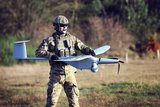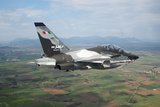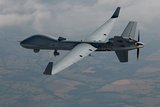ECRS takes first test flight on Spanish Eurofighter
The contract for Typhoons will see Spain’s fleet grow to 90 aircraft by 2030. (Photo: Airbus)
The Captor-E radar, an active electronically scanned array (AESA) antenna, has officially begun flight tests on board a Spanish Eurofighter Typhoon, Airbus has announced.
Also known as the European Common Radar System (ECRS), the ECRS Mk1 is being developed for the Spanish Halcon and German Quadriga Eurofighter modernisation projects.
Spain’s modernisation initiative includes the acquisition of 20 Eurofighter Typhoons to Tranche 4 configuration, which features the E-scan Mk1 AESA radar and upgraded software, signed in 2022.
Related Articles
ECRS Mk2 radar makes first flight on Eurofighter Typhoon
According to Airbus, the AESA features a mechanical repositioner to extend its field of view and provides enhanced detection capabilities for air-to-air and air-to-surface operations.
Development of the Mk2 variant – focusing on enhanced electronic warfare capabilities - is also already underway for the UK Royal Air Force. The Mk2 radar began ground tests in July 2024 and took flight for the first time at BAE Systems’ site in Warton, Lancashire in September 2024.
Related Programmes in Defence Insight
Related Equipment in Defence Insight
More from Air Warfare
-
![2025 air market review: European defence independence, next-gen tech and export concerns dominate]()
2025 air market review: European defence independence, next-gen tech and export concerns dominate
This year’s (geo)political turmoil has challenged many long-prevailing assumptions, leading to far-reaching consequences for air forces and their supplier bases in industry worldwide – with five key trends in review for 2025.
-
![Leonardo signs contract on Austria’s M-346 aircraft order]()
Leonardo signs contract on Austria’s M-346 aircraft order
The first of the 12 M-346 aircraft are expected to be delivered to the Austrian Air Force by 2028, according to the company.
-
![2025 UAV market review: $7.8 billion in new contracts signed as US leads spending]()
2025 UAV market review: $7.8 billion in new contracts signed as US leads spending
Qatar and Indonesia followed the US’s high spending on new uncrewed aerial vehicle contracts across 2025, while MALE and micro drones and loitering munitions were particularly popular subcategories this year.





















